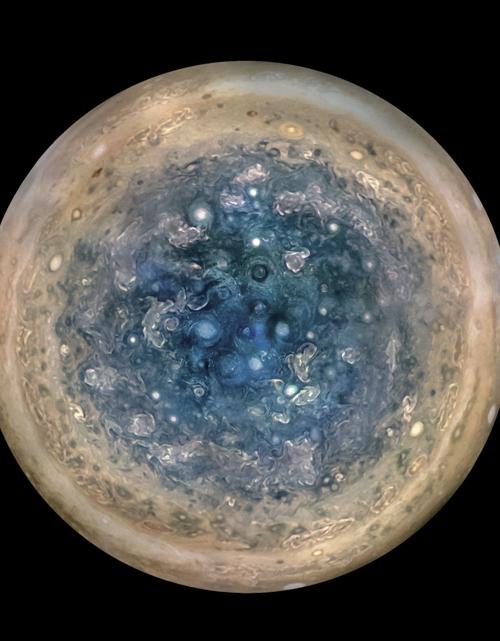Jupiter, the largest planet in our solar system, has dozens of polar cyclones, some up to 900 miles across, and a magnetic field 10 times stronger than Earth’s — findings that surprised scientists involved in NASA’s Juno mission.
Scientists reported initial results from the closest and deepest views of giant Jupiter’s polar regions in a NASA news conference and papers in the journal Science on Thursday.
“It’s making us rethink how giant planets work,” said Scott Bolton of Southwest Research Institute in San Antonio, principal investigator for the mission.
Bolton and mission scientists said initial science results from Juno, which has made six close passes of the planet’s poles since arriving on July 4, 2016, upset many of their notions about the planet.
Those massive storms were unexpected as was the direction of the energetic particles that cause the planet’s polar auroras.
Unlike Earth, where auroras are caused by particles coming from the sun and crashing into the Earth, Jupiter’s particle streams emanate from the planet.
Measurements of the planet’s gravity field also don’t fit models based on previous data. Scientists had expected to determine that Jupiter either had a dense, compact core or none at all, said Bolton.
“What we found was that really neither is true,” said Bolton. The core is larger and less dense than expected.
William Hubbard, a Juno co-investigator who created models for Juno’s core, said “the core of heavier material is fuzzier” than anticipated.
There is a denser region, but it appears to be diluted with hydrogen, he said.
Hubbard is professor emeritus at the University of Arizona Lunar and Planetary Laboratory.
He said the emerging picture of Jupiter will be refined as Juno continues its two-year investigation.
“It’s kind of like where you have your first pass of a picture sketched in, then you start filling in the details. We just had our sixth close pass and with each one the gravity field is getting much more precise.”
The radiation environment of Jupiter makes it necessary to stay high above its magnetic field.
Juno speeds by the poles, under those fields, in a two-hour plunge every 53 days, gathering information with an array of instruments and images with its JunoCam.
Most of the images on the NASA Juno website were created from the camera’s data by amateur astrophotographers, said Candice Hansen of Tucson-based Planetary Science Institute.
“We have a very tiny, tiny operations team and the contributions of the amateurs are essential,” Hansen said. “Over 900 contributions on the website were processed by the public.”







